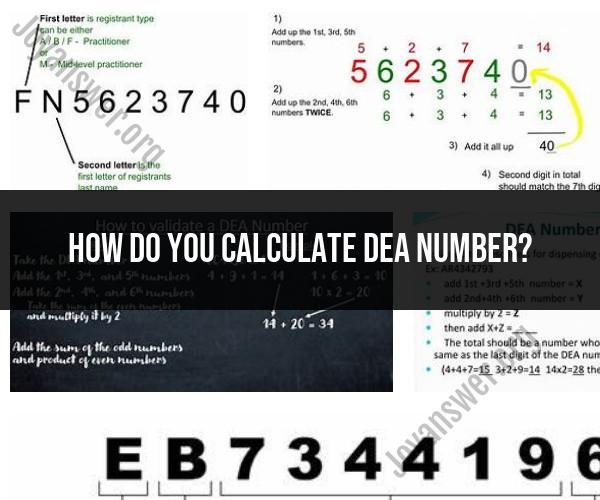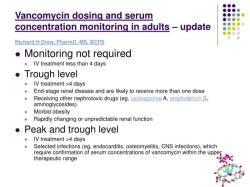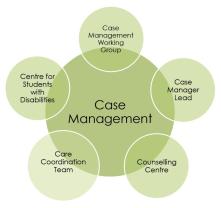How do you calculate DEA number?
A Drug Enforcement Administration (DEA) number is a unique identifier assigned to healthcare providers, including physicians, dentists, nurse practitioners, and others, that allows them to prescribe and handle controlled substances. DEA numbers are not calculated but are assigned by the DEA. Here's how the DEA assigns DEA numbers:
Initial Letter: The first letter of a DEA number represents the type of registrant:
- A, B, F, or G: Given to individual practitioners (physicians, dentists, veterinarians, etc.).
- M: Issued to mid-level practitioners (nurse practitioners, physician assistants, nurse anesthetists).
- P or R: Reserved for manufacturers, distributors, and researchers.
Second Letter: The second letter is the first letter of the prescriber's last name.
Digits 3-8: These six digits are numerical and are assigned sequentially to registrants in a particular jurisdiction.
Check Digit: The ninth digit of the DEA number is a check digit used to validate the accuracy of the DEA number. It is calculated using a specific algorithm. Here's how you can calculate the check digit:
- Take the first, third, and fifth digits of the DEA number (the second letter and the first four numerical digits) and add them together.
- Take the second, fourth, and sixth digits of the DEA number and add them together.
- Multiply the sum of the first set of digits by 2 and add it to the sum of the second set of digits.
- The last digit of this sum should match the ninth digit of the DEA number. If it doesn't match, there may be an error in the DEA number.
For example, if a physician named Dr. Smith is assigned a DEA number, and it happens to be AS123456, the check digit would be calculated as follows:
- First, third, and fifth digits (A, 1, 3) sum to 7.
- Second, fourth, and sixth digits (S, 2, 4) sum to 6.
- Multiply the sum of the first set of digits (7) by 2 and add it to the sum of the second set of digits (6), resulting in 20.
- The check digit in this case should be 0.
The DEA check digit is used to catch errors or fraudulent activity involving controlled substances prescriptions. DEA numbers are important for tracking and regulating controlled substance prescriptions and ensuring that they are used appropriately within the healthcare system.
The DEA number is a unique nine-digit number that is assigned to healthcare professionals who are authorized to prescribe controlled substances. DEA numbers are issued by the Drug Enforcement Administration (DEA), a division of the United States Department of Justice.
The DEA number is composed of two letters and seven numbers. The first letter indicates the type of registrant, such as a physician (P), dentist (D), or veterinarian (V). The second letter is typically the first letter of the registrant's last name. The remaining seven digits are a unique identifier for the registrant.
The ninth digit of the DEA number is a check digit. The check digit is calculated using a specific formula to ensure that the DEA number is valid.
How to calculate the DEA number check digit:
- Add the first, third, and fifth digits of the DEA number.
- Add the second, fourth, and sixth digits of the DEA number and multiply the sum by two.
- Add the results of steps 1 and 2.
- The last digit of this total should be the check digit.
If the last digit of the total is not the same as the last digit of the DEA number, then the DEA number is not valid.
Here is an example of how to calculate the DEA number check digit:
DEA number: AD0865937
- Add the first, third, and fifth digits: 0 + 6 + 9 = 15
- Add the second, fourth, and sixth digits and multiply the sum by two: 8 + 5 + 3 = 1616 * 2 = 32
- Add the results of steps 1 and 2: 15 + 32 = 47
- The last digit of this total should be the check digit: 7
Since the last digit of the total is the same as the last digit of the DEA number, the DEA number is valid.
The DEA number is an important tool for preventing prescription drug abuse and diversion. It is important for healthcare professionals to understand how to calculate and verify the DEA number, so that they can ensure that they are only prescribing controlled substances to authorized individuals.











